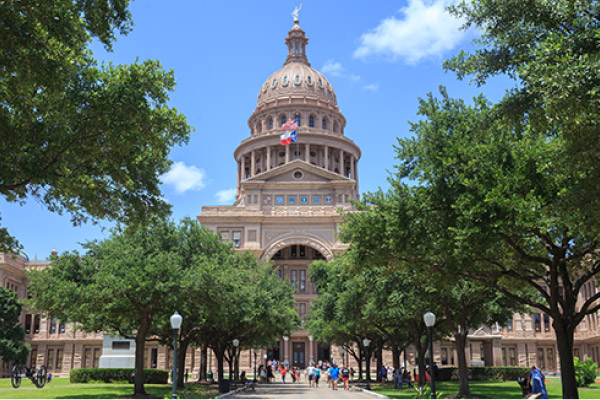Coronavirus Aid, Relief, and Economic Security Act of 2020
Summary of Legislation by FMP Wealth Advisers
Congress passed the Coronavirus Aid, Relief, and Economic Security Act (CARES Act) on March 27, 2020 in response to the coronavirus pandemic. The $2-trillion stimulus package will allow the federal government to provide financial assistance to individuals, businesses, and local governments affected by the coronavirus. We have reviewed the legislation and summarized in this document the provisions we believe to be of most impact and interest to our clients. We have not included every provision of the legislation in this document. The full text of the legislation can be found at https://www.congress.gov/bill/116th-congress/senate-bill/3548/text.
Delay of Certain Deadlines
The tax filing deadline for 2019 federal income tax returns is extended from April 15, 2020 to July 15, 2020. The deadline for tax payments normally due by April 15, 2020 is also extended to July 15, 2020. Taxpayers will not owe interest and penalties on taxes paid by July 15, 2020. The extended deadline applies to all individuals, corporations, trusts and estates. Individuals may also delay their 2019 contributions to Individual Retirement Accounts and Health Savings Accounts to July 15, 2020. Taxpayers are not required to file the application for extension of time to file their 2019 income tax returns if they will file their tax returns before the July 15, 2020 deadline.
Recovery Rebates for Individuals
Most Americans will receive stimulus payments in 2020. Single taxpayers with adjusted gross incomes of $75,000 or less will receive payments of $1,200 plus an additional $500 for each dependent child under age 17. Married taxpayers with adjusted gross incomes of $150,000 or less will receive payments of $2,400 plus an additional $500 for each dependent child under age 17. The payment amounts are reduced by $5 for every $100 of adjusted gross income above the $75,000 or $150,000 threshold, so single taxpayers with adjusted gross incomes of $99,000 or more and married taxpayers with adjusted gross incomes of $198,000 or more will receive $0 payments. The payment amounts will be based on taxpayers’ 2019 adjusted gross incomes if they have filed their 2019 federal income tax returns before the payments are sent or will be based on taxpayers’ 2018 adjusted gross incomes if they have not filed their 2019 federal income tax returns before the payments are sent. The payments will not be considered taxable income because they are technically advancements of refundable credits on taxpayers’ 2020 federal income tax returns. Taxpayers who receive payments that exceed their 2020 federal income tax liabilities will not be required to pay back any excess payment amounts they received.
Required Minimum Distributions
Individuals who reached age 70.5 before 2020 or will reach age 72 during 2020 normally would take required minimum distributions from their individual retirement accounts and employer retirement plan accounts in 2020. The required minimum distribution rules that normally apply to individual retirement accounts and employer retirement plan accounts have been waived for 2020. Individuals may avoid taking the required minimum distributions in 2020 from their traditional IRAs, SEP IRAs, SIMPLE IRAs, 401(k), 403(b), and 457(b) accounts. Individuals who do not distribute from these accounts in 2020 will avoid having the distributions included in their 2020 taxable incomes. Individuals who have already distributed from these accounts in 2020 may be able to deposit the distributions back into their accounts within 60 days of receiving the distributions to avoid having the distributions included in their 2020 taxable incomes. Individuals who deposit the distributions back into their accounts within 60 days will complete a 60-day rollover which they are permitted to complete only once within a 12-month period.
Retirement Account Distributions
Individuals who distribute from their individual retirement accounts or employer retirement plan accounts before age 59.5 normally must pay a 10% penalty on the distributed amount in addition to ordinary income tax. Individuals may distribute up to $100,000 from these accounts in 2020 without paying the 10% penalty. Individuals will still pay ordinary income tax on any amounts distributed from their individual retirement accounts or employer retirement plan accounts in 2020 that they do not contribute back into their accounts within three years of receiving the distributions. Individuals have the option to report the entire distribution on their 2020 income tax returns or spread the distribution reporting over three years on their 2020, 2021, and 2022 income tax returns. Individuals may avoid paying both the 10% penalty and ordinary income tax on distributions of up to $100,000 from their individual retirement accounts or employer retirement plan accounts in 2020 for the portion of the distributions that they contribute back into their accounts within three years of receiving the distributions. Individuals qualify for these retirement account distribution provisions if they or a family member have been diagnosed with coronavirus or have experienced adverse financial consequences related to the coronavirus.
Retirement Plan Loans
Individuals with the option to obtain loans from their employer retirement plan accounts may borrow 100% of their vested account balances up to a maximum of $100,000 within 180 days following March 27, 2020. These loan limits represent a temporary increase from the normal loan limits for individuals to borrow up to 50% of their vested account balances up to a maximum of $50,000. Individuals with outstanding loans from employer retirement plans may delay the remaining payments in 2020 for up to one year and extend the loan period by one year.
Unemployment Benefits
Individuals receiving state unemployment insurance benefits will receive an additional $600 per week of benefits for up to four months. Individuals can receive state unemployment benefits for an additional 13 weeks beyond the normal benefit period in each state. The unemployment benefits are available to terminated employees as well as furloughed employees, independent contractors, and self-employed individuals who do not normally qualify for unemployment benefits. The normal one-week waiting period for unemployment benefits is waived so individuals can begin receiving benefits immediately after the approval of their applications.
Paid Sick Leave
Individuals employed by companies with 500 or fewer employees, including individual contractors and self-employed individuals, who need to be absent from work due to coronavirus may receive paid sick leave. Individuals diagnosed, seeking a diagnosis, or being quarantined for coronavirus can receive ten days of paid sick leave at full pay up to $511 per day. Individuals caring for a family member diagnosed, seeking a diagnosis, or being quarantined for coronavirus can receive ten days of paid sick leave at two-thirds of pay up to $200 per day. Individuals staying at home to care for a child because the child’s school or day care center is closed due to coronavirus can receive a combined sixty days of paid sick leave and family leave at two-thirds of pay up to $200 per day. The employers will pay all benefits and then be fully reimbursed by the federal government through tax credits. Companies with more than 500 employees are exempt from this provision, and companies with fewer than 50 employees may qualify for an exemption from this provision if paying the sick leave would cause them a financial hardship.
Qualified Medical Expenses
Health insurance plans that qualify insured individuals to contribute to Health Savings Accounts may cover testing, treatment, and vaccinations for coronavirus without applying the plan deductible and without sharing costs with the insured. Health Savings Accounts and Flexible Spending Accounts may be used to purchase over-the-counter medicines and medical products without prescriptions from physicians. Menstrual care products are qualified medical expenses and may be purchased using Health Savings Accounts and Flexible Spending Accounts.
Charitable Donations
Individual taxpayers who claim the standard deduction on their 2020 income tax returns may deduct up to $300 of their cash donations to charitable organizations in 2020 from the calculation of their adjusted gross incomes. In prior years, individuals who claimed the standard deduction could not deduct any of their donations to charitable organizations. Individual taxpayers who itemize deductions on their 2020 income tax returns may deduct all their cash donations to charitable organizations in 2020 up to 100% of adjusted gross income, which is a temporary increase from the normal limit on individual taxpayers to deduct their cash donations up to 50% of adjusted gross income. Corporate taxpayers may deduct their cash donations to charitable organizations in 2020 up to 25% of adjusted gross income, which is a temporary increase from the normal limit on corporations to deduct cash donations up to 10% of adjusted gross income.
Federal Student Loans
Federal student loan payments are not required during the six-month period from April through September 2020. Interest accrual is also suspended from April through September 2020, so federal student loan balances will not accumulate new interest, and elective payments will apply entirely to principal balances. Collection activities and wage garnishments are suspended for federal student loans in default. The suspension provisions do not apply to private student loans.
Federally Backed Mortgages
Lenders and servicers of home mortgage loans that are backed by a federal agency may not begin foreclosure procedures or finalize foreclosure judgements for 60 days following March 18, 2020. Borrowers of mortgage loans that are backed by a federal agency who have experienced financial hardship may request a forbearance to pause or reduce their mortgage payments for up to 180 days plus one extension for up to an additional 180 days. The forbearance will not require the borrower to pay additional fees, penalties, or interest beyond the scheduled amounts. These provisions do not apply to mortgage loans that are not backed by the federal government.
Employer Payroll Tax Credit
Employers with operations partially or fully suspended in 2020 due to a government order or experiencing a 50% reduction in quarterly receipts in 2020 compared to the same quarter in 2019 may claim a refundable tax credit equal to 50% of employee wages up to $10,000 per employee. Employers with 100 or fewer employees may claim the credit for wages paid to all employees, while employers with more than 100 employees may claim the credit only for wages paid to employees who are working less time or not at all as a result of the reduction in operations.
Payroll Tax Payment Delay
Employers and self-employed individuals may defer their remaining 2020 payments of the 6.2% employer share of the Social Security tax on employee wages. The deferred 2020 payments must be paid over the following two years, with half due in 2021 and half due in 2022.
Paycheck Protection Loans
Small businesses with fewer than 500 employees, including sole proprietors and independent contractors, may apply for Paycheck Protection Loans to cover payroll costs, employee sick leave, employee health care, and other benefits. The loans can provide businesses 250% of their average monthly payroll costs up to $100,000 per employee up to a maximum of $10,000,000 total borrowed at 1% interest for a term of two years. The loan payments may be deferred during the first six months. The loans do not require a personal guarantee or collateral backing. The loans may be partially to fully forgiven and excluded from income for businesses that use their loans to pay qualifying expenses within the first eight weeks of receiving their loans.
Economic Injury Disaster Loans
Small businesses with fewer than 500 employees, including sole proprietors and independent contractors, may apply for Economic Injury Disaster Loans to help pay business expenses during a temporary loss of revenue. The loans may provide up to $2,000,000 borrowed at 3.75% interest for a maximum term of 30 years. The loan payments may be deferred during the first six months. The loans may be approved based only on the applicant’s credit score, and loans smaller than $200,000 may be approved without a personal guarantee. Businesses that are not approved for the Economic Injury Disaster Loans may still receive emergency grants of $10,000 that can be fully forgiven if they use the grants to pay qualifying expenses during their loss of revenue.
Conclusion
The CARES Act contains several other provisions affecting corporations, public service providers, and local governments. We do not believe those provisions will have a significant impact on how our clients plan around the coronavirus pandemic. Legislative changes are one reason why we consider financial planning to be a process rather than an event. We will continue to review new legislation and incorporate pertinent changes into our clients’ financial plans.
Disclaimer
*The information presented here is not specific to any individual’s personal circumstances. FMP Wealth Advisers is not providing investment, tax, legal, or retirement advice or recommendationsin this article.
**To the extent that this material concerns tax matters, it is not intended or written to be used, and cannot be used, by a taxpayer for the purpose of avoiding penalties that may be imposed by law. Each taxpayer should seek independent advice from a tax professional based on his or her individual circumstances.
***These materials are provided for general information and educational purposes based upon publicly available information from sources believed to be reliable — we cannot assure the accuracy or completeness of these materials. The information in these materials may change at any time and without notice.
Certified Financial Planner® (CFP®)
The program is administered by the Certified Financial Planner Board of Standards Inc. Those with the CFP® designation have demonstrate competency in all areas of finance related to financial planning. Candidates complete studies on over 100 topics, including stocks, bonds, taxes, insurance, retirement planning and estate planning. In addition to passing the CFP certification exam, candidate must also complete qualifying work experience and agree to adhere to the CFP Board’s code of ethics and professional responsibility and financial planning standards.
Chartered Financial Analyst (CFA®)
This designation is offered by the CFA Institute (formerly the Association for Investment Management and Research [AIMR]). To obtain the CFA charter, candidates must successfully complete three difficult exams and gain at least three (3) years of qualifying work experience, among other requirements. In passing these exams, candidates demonstrate their competence, integrity and extensive knowledge in accounting, ethical and professional standards, economics, portfolio management and security analysis.
Chartered Retirement Planning Counselor (CRPC®)
This designation is offered by the College for Financial Planning. Individuals may earn the CRPC designation by completing a study program and passing a final multiple-choice examination. The study program to become a CPC includes the entire retirement planning process, meeting multiple financial objectives, sources of retirement income, personal saving, employer-sponsored retirement plans, income taxes, retirement cash flow, asset management, estate planning and more. Every two years, CRPC professionals must complete 16 hours of continuing education and pay a small fee to continue using the designation.



